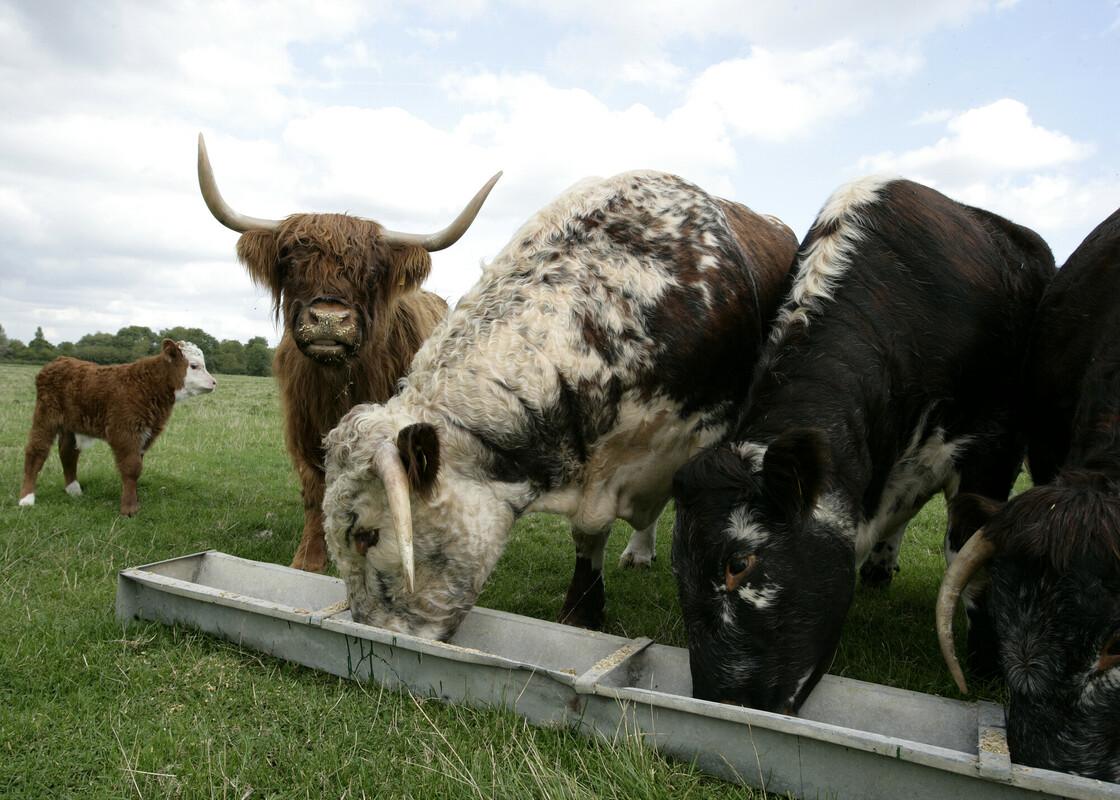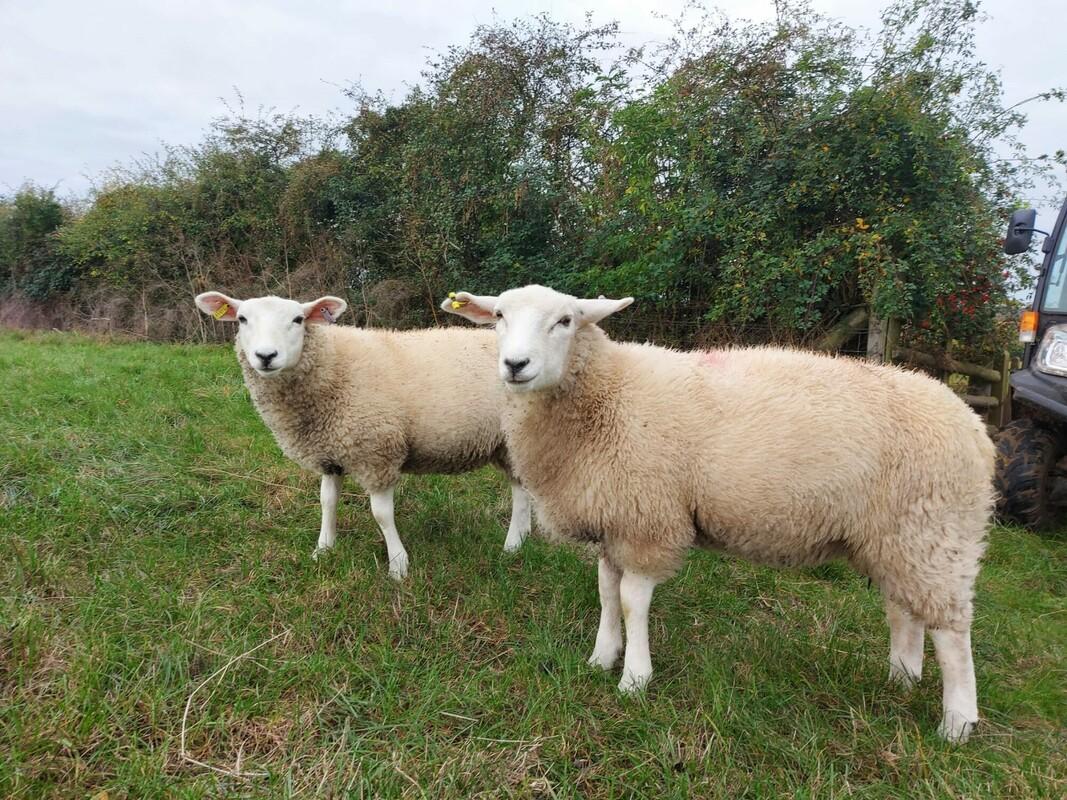
7. Farming and Agroforestry
Farming and agroforestry help us to manage the Forest’s mosaic of habitats for people and wildlife and benefits the local economy.
Expanding conservation grazing
Expanding conservation grazing As part of our commitment to training and developing our staff team, we were delighted to promote Emma Kersley into the role of Assistant Biodiversity Officer. Emma started with the charity on a one year forestry internship placement and having gained permanent employment and progressed in her role, she jumped at the opportunity to utilise the skills and knowledge gained as part of her masters degree and move across into the biodiversity team. With a specialism in grassland habitats, Emma has taken over responsibility for the welfare of our Flying Flock, using our sheep team to undertake different grazing regimes to achieve different grassland management objectives across our sites.
Forest farming benefitting the local economy
As well as our own organic livestock, we are working with a wide range of farmers across the Forest to help to deliver our agroforestry ambitions. This year we contracted with seven graziers, who were working with us to achieve our grassland management objectives for different grassland sites as part of the mosaic of habitats which make up the Forest. Each grazier is providing specialist support to help us to improve the biodiversity value of our grasslands, and in return they obtain high quality grazing for their animals, which helps to support them to make a living from farming.
Silvopasture agroforestry at Sheriffs Lench
In the UK, silvopastoral agroforestry is characterised by widely spaced trees with an understory of grazing pasture. We have trialled this form of agroforestry at Sheriffs Lench, using traditional heritage species of fruit trees which will eventually bear an orchard crop, underplanted with a nitrogen fixing crop of red clover, which will improve the nutrient value of the soil. The plan is that one half of the field area will be planted with a crop, and the other half grazed on rotation. Our Sheriffs Lench site is certified organic, and it took a while for the clover to establish itself, but it has proven its worth with a sea of purple flowers attracting bees and other pollinating insects, which will benefit the surrounding farmland.

Year in Review
Our farming and agroforestry work moved forwards in 2021/22, although not always in the ways we had planned! Whilst we did not manage to find the conservation farmer we were originally looking for, this presented an opportunity for us to do things differently, as we were delighted to be able to promote and develop internally. Emma Kersley has moved into the role of Assistant Biodiversity Officer (Grasslands) and took over the responsibility for our conservation grazing programme as a way of managing these important areas of the Forest mosaic. Work continued to expand conservation grazing in the Forest.
The Flying Flock, which comprises Jacob and Hebridean sheep (traditional breeds of sheep with horns), is perfect for conservation grazing as these breeds have tough palates which allow them to eat some of the more dominant grassland species which otherwise outcompete the more delicate meadow flowers. Their horns also disturb undergrowth, rooting out species like bramble and leaving bare patches of ground which allow other species to colonise.
The recruitment of volunteer livestock checkers has enabled us to cover more areas of the Forest. With training and development to support Emma to get up to speed with livestock health and welfare, we sold our commercial flock of organic pedigree Lleyn sheep, allowing time to focus on getting to know our 70+ Jacob and Hebridean grazing specialists. Having retained our pedigree Jacob and Hebridean rams, we will be able to build up the size of our conservation grazing flock going forwards.
Challenges faced
We have found it difficult to recruit a conservation farmer who both shares the charity’s ambitions for increasing the use of livestock to assist with managing the Forest sympathetically for the benefit of people and wildlife and at the same time is able to manage livestock on a commercial scale, to the high standards of animal welfare which we require.
We have had to look at alternative ways of delivering our conservation grazing programme in the short term. We have scaled back our sheep flock, retaining a focus on the rarer breeds such as the Jacobs and Hebrideans, which are more suited to conservation grazing.
By starting small, and training up enthusiastic staff internally, we will build the flock back up slowly. This will enable us to fully monitor the positive effects of conservation grazing management techniques on our grassland habitats.
The Year Ahead
With a new grassland specialist within the biodiversity team, we are now able to spend time looking at the range of different grassland sites we have across the Forest. This means we will be able to work with a wider range of local graziers, who will use their livestock to help us graze to different management regimes.

Many of our local farmers have breeds which are particularly suited to conservation grazing, such as Herdwick sheep and Highland cattle, and we are looking forward to trialling a range of regimes and livestock breeds and monitoring the grasslands over time to see what works best.
We contract with a range of local farmers to help us to manage our land, from hedge cutting in the winter to hay cutting in the summer, as well as specific tasks such as direct drilling wildflower mixes, and cutting and baling our pollinator pathways. The relationship works well both ways – farmers gain additional income, and we benefit from their skills, expertise, and machinery to manage the Forest for the benefit of people, wildlife, and the environment.



